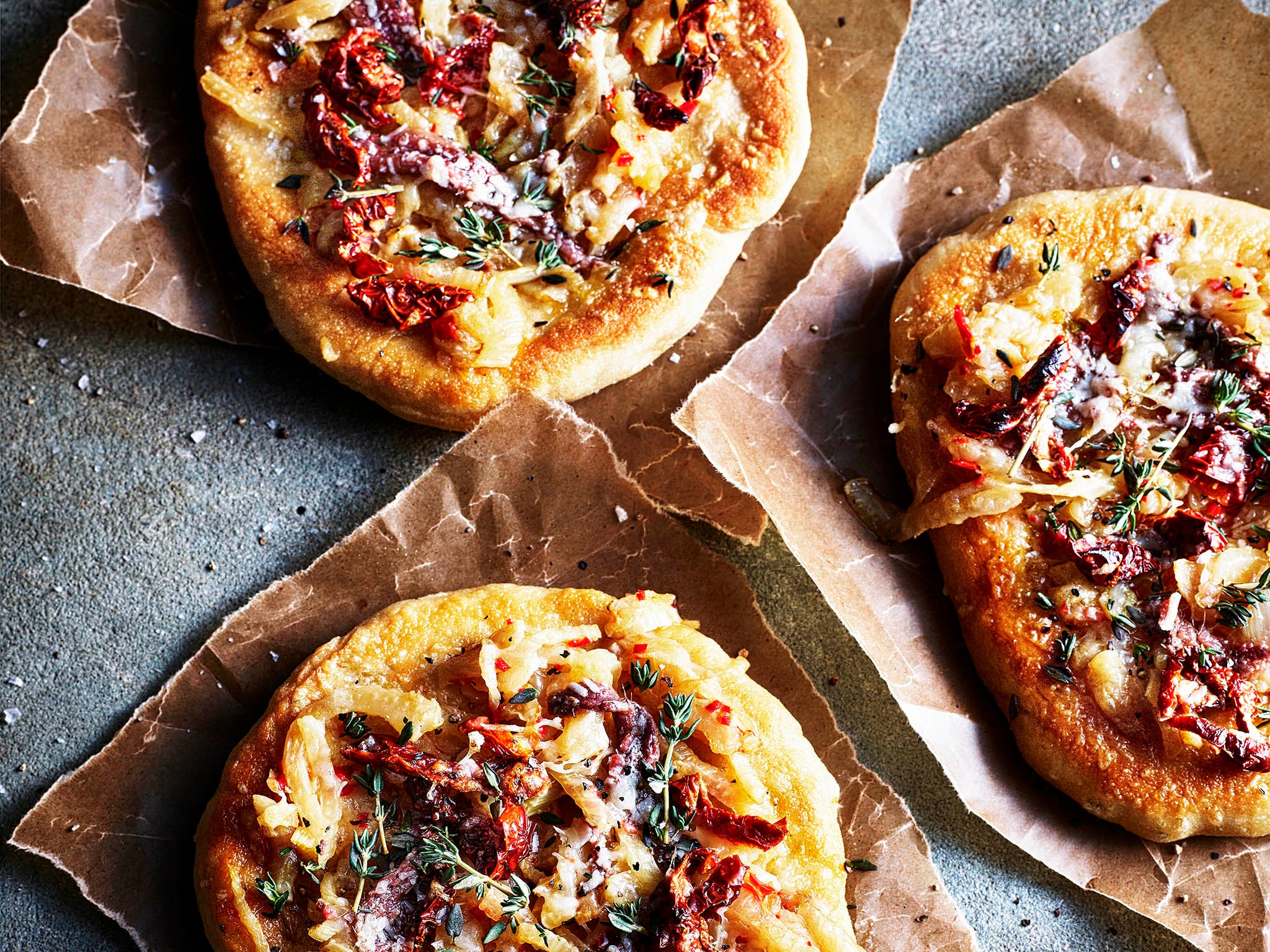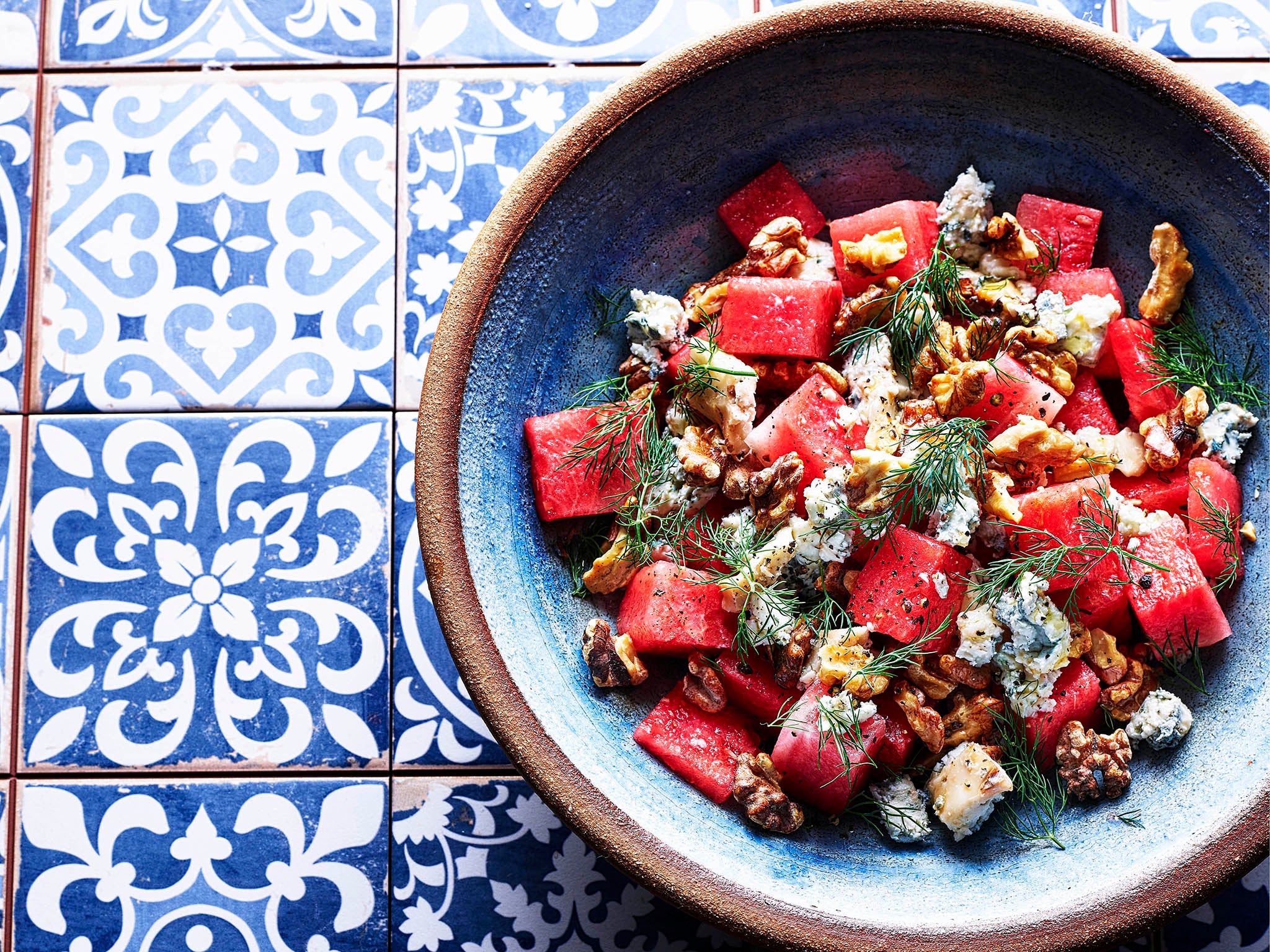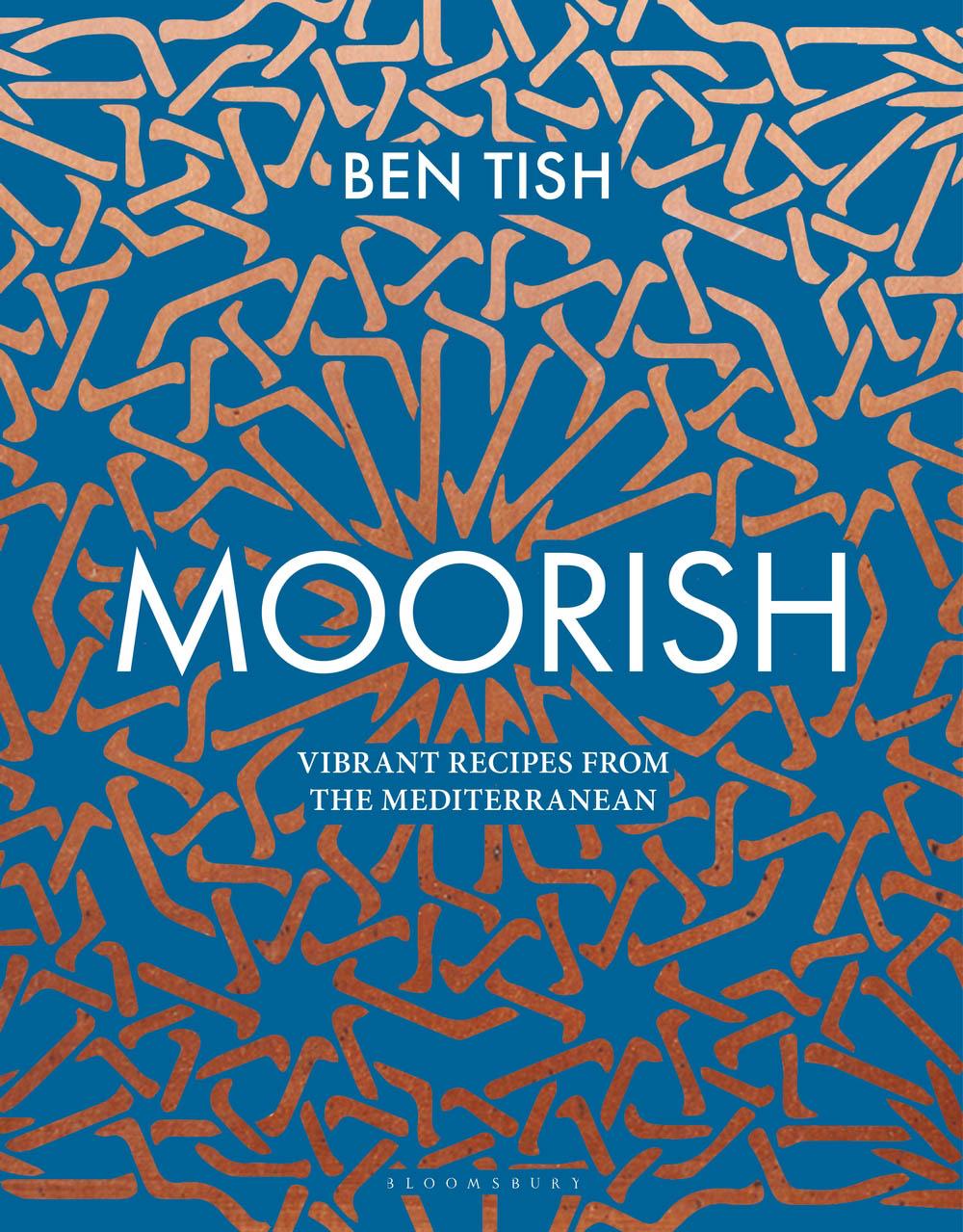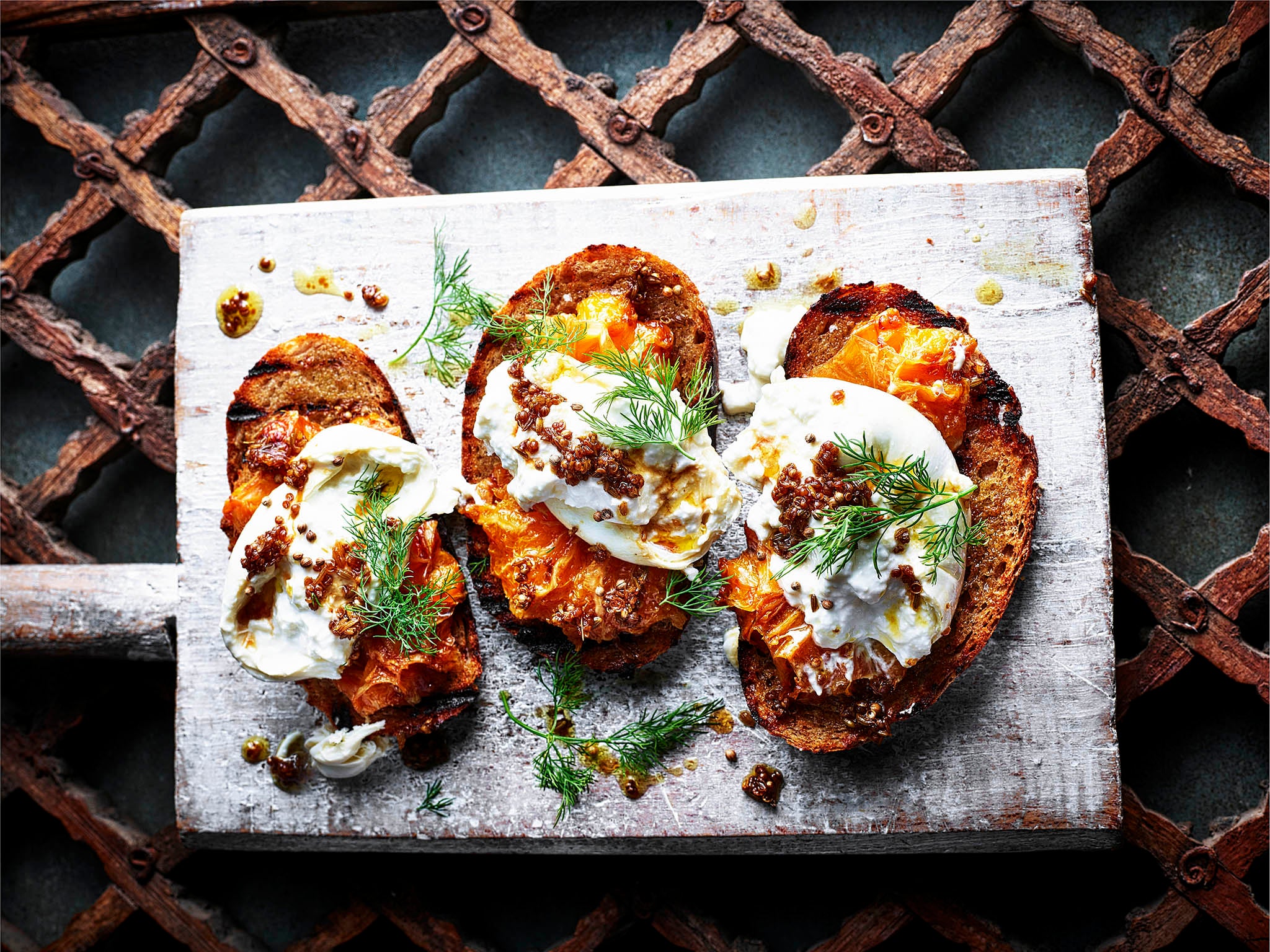Your support helps us to tell the story
From reproductive rights to climate change to Big Tech, The Independent is on the ground when the story is developing. Whether it's investigating the financials of Elon Musk's pro-Trump PAC or producing our latest documentary, 'The A Word', which shines a light on the American women fighting for reproductive rights, we know how important it is to parse out the facts from the messaging.
At such a critical moment in US history, we need reporters on the ground. Your donation allows us to keep sending journalists to speak to both sides of the story.
The Independent is trusted by Americans across the entire political spectrum. And unlike many other quality news outlets, we choose not to lock Americans out of our reporting and analysis with paywalls. We believe quality journalism should be available to everyone, paid for by those who can afford it.
Your support makes all the difference.Burrata on sourdough with crushed coriander and fennel seeds and burnt orange
At the heart of this recipe is the magical combination of ultra creamy, rich burrata married with the crunchy mix of aromatic spices gently nestling against sweetly charred oranges. Ensure your burrata is super fresh – in southern Italy, where burrata is made, you’ll find that the locals won’t consume anything that’s over 24 hours old. If you can’t find burrata then a fresh buffalo mozzarella will do nicely.
As well as making a delicious brunch, I love to serve this as a starter for a mid-summer dinner when there’s an exotic, sultry feel in the air.
Serves 4
2 medium, sweet oranges, peeled, pith removed and cut horizontally in half
1 teaspoon caster sugar
1 tablespoon coriander seeds
½ tablespoon fennel seeds
extra virgin olive oil
4 teaspoons white wine vinegar
4 small slices of sourdough bread
4 small burrata (as fresh as can be), at room temperature
a handful of fresh herb fennel or dill, fronds picked
sea salt and black pepper
Sprinkle the cut side of the orange halves with the sugar and rub it in. Set aside for 5 minutes. Heat a medium sauté pan over a medium heat. Put the orange halves in the pan cut side down. Lower the heat slightly and leave the oranges to caramelise, without moving them, for 8–10 minutes or until coloured to a deep, dark caramel – almost burnt. Remove from the heat and leave the oranges to cool in the pan.
Lightly crush the coriander and fennel seeds with a pestle and mortar. Tip into a small saucepan and cover with a tablespoon of olive oil. Heat the seeds and oil over a low heat until the oil starts to bubble and the seeds lightly fizzle. Immediately remove from the heat and add the vinegar and the caramelised orange juices from the sauté pan. Stir to mix.
Heat a ridged grill pan. Drizzle olive oil over both sides of the bread and char on both sides in the hot pan.
Drain the burrata and carefully pat dry with kitchen paper, then season well. Place a burrata with a piece of caramelised orange on each slice of bread. Spoon over the spice-oil dressing and scatter the herbs on top. Serve immediately.

Tarongia (Sicilian olive oil-fried flatbread) with anchovy, fennel, dried tomatoes and pecorino
From the Aeolian islands off the Sicilian coast, this wonderful bread is not for the faint hearted. The dough is fried in olive oil for a few minutes before the toppings are added and then grilled to finish. It is completely delicious and the toppings can be varied to your liking. A spicy pâté such as nduja with some fresh and bitter chicory leaves and lemon is a delicious alternative, as is the Tomato, Almond and Chilli Pesto on page 290.
The dough will naturally take on the flavour of the olive oil used to deep fry, so be sure to go with a favourite variety.
Serves 6
Dough
240ml lukewarm water
50ml red wine
1 tablespoon extra virgin olive oil
1 tablespoon runny honey
1 x 7g sachet dried yeast granules
425g strong white flour, sifted, plus extra for dusting
grated zest of 1 unwaxed lemon
½ teaspoon fine salt
olive oil
Filling
1 bulb of fennel, cored and finely sliced
75g sun-dried tomatoes packed in oil, drained and roughly chopped
1 red onion, finely sliced
1 fresh red chilli, finely sliced
18 salted anchovies
100g pecorino or caciocavallo, grated
1 tablespoon picked thyme leaves
sea salt and black pepper
First make the bread dough. Put the water, wine, oil and honey in a large mixing bowl. Add the yeast and stir well. Leave to activate and become foamy. Now add a third of the flour, the lemon zest and salt and whisk in to make a smooth batter. Mix in the remaining flour to make a manageable dough.
Transfer the dough to a floured surface and knead for a few minutes or until you have a firm, smooth dough. Shape into a ball, place in a bowl and cover with a cloth. Leave to rise in a warm spot for 45 minutes or until doubled in size. Cut the dough into 6 equal portions. Roll out each piece into a rough circle. Leave to rest for 15 minutes before cooking.
Heat enough olive oil for shallow frying in a deep pan to 170°C. In batches, carefully lower the breads into the hot oil using a metal spatula or spider and fry for 5–6 minutes or until golden brown on both sides. Remove and drain on kitchen paper. Keep warm.
To make the filling, heat a sauté pan over a medium heat and add a glug of olive oil. Add the fennel and season, then cook for 3 minutes or until softened and browned. Add the tomatoes, onion and chilli, stir and cook for a further 3 minutes. Transfer to a bowl.
Preheat the grill. Divide the fennel and tomato mix among the flatbreads, spreading it over the top, followed by the anchovies and then the cheese. Place under the grill and cook for 3 minutes or until the cheese is melted and golden brown. Sprinkle with thyme and serve.

Watermelon and salty blue cheese with toasted walnuts and moscatel vinegar
The Moors introduced the watermelon to Spain towards the end of the 10th century. The fruit became wildly popular due to its sweet, refreshing flesh, and soon the word had spread throughout the countries of southern Europe.
Like many I love to eat watermelon on its own, chilled, when it’s blazing hot, but I also love this combination of the sweet fruit’s pairing with the salty blue cheese and the crunchy, salted walnuts. Moscatel vinegar, or Muscat grape vinegar, is a delicious sweet vinegar with a gently sharp edge. A white balsamic would be a good alternative.
Serves 4–6
½ small, heavy watermelon (800g–1kg) with unblemished smooth, shiny skin
50ml moscatel vinegar or white balsamic
100g walnut halves
70ml walnut oil
a handful of herb fennel or dill fronds
150g salty blue cheese (such as Gorgonzola, Picos Blue, Roquefort)
sea salt and black pepper

Peel the melon half, removing all the white flesh under the skin. Dice the coloured flesh into 2cm pieces. Place in a bowl. Season and toss in the vinegar. Set aside. Place a sauté pan over a medium heat. Break the walnut halves into pieces directly into the pan and toast for a few minutes, tossing, until they are fragrant and have started to release their oil. Season liberally with salt and mix into the watermelon.
Add the walnut oil and fennel fronds. and crumble in the blue cheese. Briefly mix together and serve. This is delicious on its own, with warm flatbreads, or as part of a mezze-style sharing meal.
'Moorish' by Ben Tish (Bloomsbury Absolute, £26) is out now. Photography © Kris Kirkham

Join our commenting forum
Join thought-provoking conversations, follow other Independent readers and see their replies
Comments